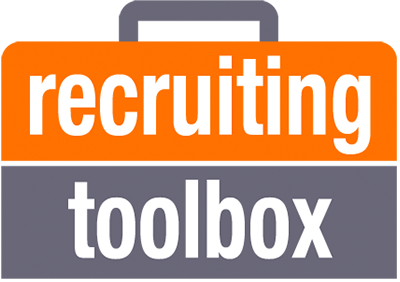Recruiting Toolbox Blog
Recruiting Toolbox Leadership Panel – Part 1
Recruiting Toolbox held our Recruiting Leadership Lab in November 2015 for an audience of corporate recruiting managers and directors. We had a terrific group of attendees from companies like Target, Microsoft, Amazon, Etsy, Netflix, and many more. We got together in Silicon Valley for a two-day workshop focused on recruiting strategies, compelling business cases, influencing executives and enabling recruiting teams to be better business partners.
As part of the workshop, we welcomed Talent Acquisition senior leaders for a panel discussion to share their insights about what it is like to lead talent acquisition in the real world today. We’ve captured some of the discussion to show you how some innovative industry leaders are working to address the challenges for corporate recruitment today.
Our panelists are longtime senior talent acquisition leaders.
- Andrew Carges, Vice President of Global Talent Acquisition for GoDaddy
- Brad Cook, Global Vice President Talent Acquisition at Informatica
- Nellie Peshkov, Vice President of Talent Acquisition at Netflix
- John Vlastelica, Managing Director of Recruiting Toolbox and host of the panel
|
|
|
 |
 |
The conversation focused on the panelists’ approach to Strategy, Influence, and Prioritization, as well as lessons they learned the hard way. Today I’ll share some of their insights around Strategy and Influence. I hope you find it helpful in your own work and encourage you to check out the Recruiting Leadership Lab if you’d like to attend or have other recruiting leaders in your organization join us for the next one.
The panel began by talking about the challenges of building and documenting a strategy through the constant change of today.
Nellie from Netflix talked about how her view of strategy has changed during her career.
My view of strategy development has evolved over time. I used to build beautiful slide presentations and update them every quarter. I did that at my previous companies, Symantec and EA. Then one day I was at a conference and saw a presentation on recruiting strategy and I realized that my slides looked just like the slides of the person who was presenting. It made me realize that since my strategy slide deck looked just like someone else’s, I basically didn’t have a real strategy. A real strategy has to be specific to you and your company. You need to deeply understand what talent is most critical to the success of your company and laser focus on being great at hiring that talent. Your strategy has to serve that goal - not just finding the best talent, but the best talent for your company that fits your company's culture and where it's heading.
For Andrew at GoDaddy, it is all about knowing where the talent acquisition organization is today and where you want them to be.
You can’t build a strategy until you have some fundamental things in place. I think there are four stages that Talent Acquisition can be in - Reactive, Tactical, Operational, and Strategic. The goal is to move along from one to the next until we are truly Strategic. We have to have the right conversations that are aligned to the stage where we are and build trust with the business. Then we can ultimately move to the next stage and focus on that level of conversation.
Brad at Informatica shared the importance of keeping things actionable and building on a strategy from year to year with ongoing course corrections.
Coming out of a company for 11 years where we over-strategized everything, I learned a lot. One key thing to keep in mind is that there are so many different definitions of mission, vision, and strategy. We need to think about the buckets of work that we need to do and define the executable parts of each one. My yearly planning now is to look back to last year and see what we didn’t do, then decide if it is still important to us. If so, we outline how to get that done.
Another key discussion point was about how to influence executives and avoid surprises. For Brad, data is essential (he does work at Informatica, after all)!
I have data and numbers and detailed answers for every question from the business. Once the business knew this about me, they stopped asking for all the details. They knew I had it and we could talk about the decisions that we need to make. My background is in Sales, so my approach to influence comes from that. I’m always looking ahead at what we’ll need and I drip feed my executives for weeks or months, so by the time I ask for something, they are there with me thinking the same way.
Andrew shared the importance of being closely connected to the business for his success.
My goal is to make our executives happy. It’s all about helping the executives solve their business problems. I have to say that the business pulls me in on all kinds of decisions and keeps me from being surprised about anything. Being a part of the business conversations early on is key and helps me make good business decisions about what will help us in the market.
And Nellie focuses on where her organization’s time and energy needs to be focused.
I agree it is about solving business problems. For me it is all about deciding not only what to do but also what not to do. For some companies I would lean heavily into university recruiting because that was the key strategy to bring digital skill set into the workforce. For other companies, it might be finding local pools of great engineering talent around the world. At Netflix, it's truly about making every hire to be the best hire we've ever made. As a result, I don't compare recruiters on any metrics. I do compare business groups and hiring teams. Who is doing well, who isn't and how we can share best practices across the teams. We have to be sure we are serving their needs, no matter how different they are. Engineering groups have been successful building their brand with meet ups. Why shouldn't Accounting or HR do the same? It's not always about doing the most innovative, shining thing that no one else does. More often than not it's about doing what works to solve most urgent problems.
As you can see with this discussion of Strategy, it's not about theory or building slide decks. These veteran leaders have been successful by being focused on being fully aligned with their businesses and knowing what they need to execute on to solve real business problems.
In Part 2, we’ll share how these senior leaders prioritize what they need to accomplish and lessons they have learned the hard way.
Written by Matt Grove, Principal Consultant, Recruiting Toolbox


